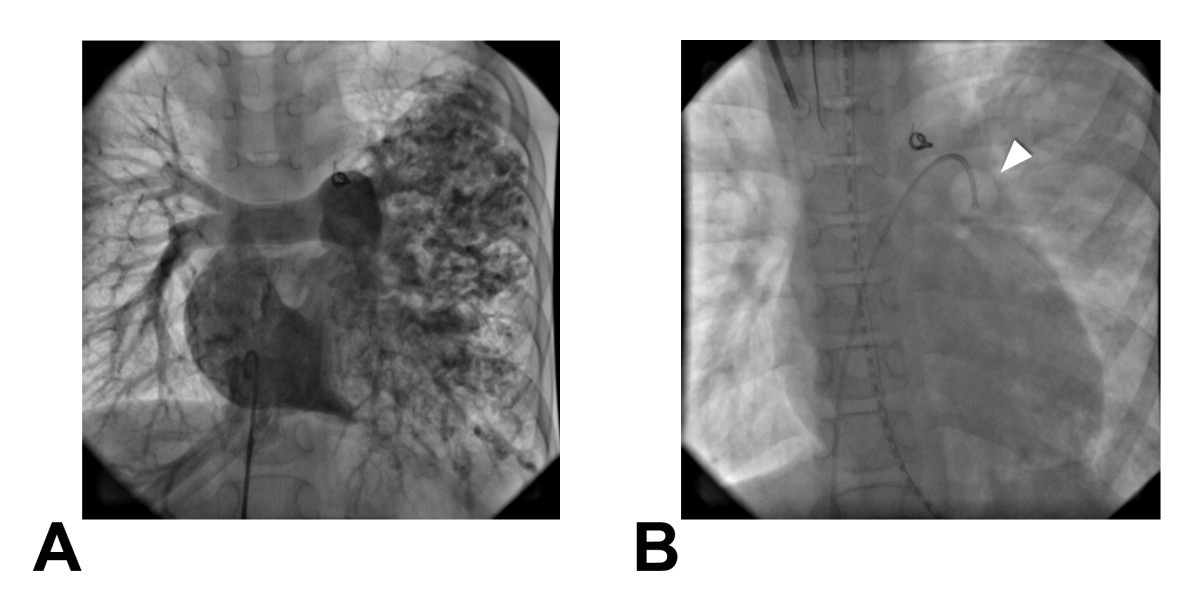Pulmonary artery banding

Left
pulmonary artery banding to repair ipsilateral diffuse pulmonary arteriovenous fistula. Cardiac catheterization of our PAVF patient. A) PAVFs localized in entire left lung by the right atrial angiography. The coil used for patent ductus arteriosus occulusion is shown in the center. B) An inflated balloon, indicated by a white arrowhead, localizes over the main trunk of left pulmonary artery.

Left
pulmonary artery banding to repair ipsilateral diffuse pulmonary arteriovenous fistula. Multiple collateral vasculature is seen from the pulmonary arteries directly to pulmonary veins and left atrium. A) Ascending Aortography. B) Descending Aortography.
Pulmonary artery banding is a palliative surgical procedure used to decrease excessive pulmonary blood flow. It is usually used for neonates and infants with left-to-right shunts unable to withstand complete surgical correction.
Some indications include:
- single ventricle
- multiple ventricular septal defects
- atrioventricular septal defects
- double outlet right ventricle
- double outlet left ventricle
- unrepaired transposition of the great arteries in neonates to prepare the left ventricle to receive a higher systemic pressure load prior to arterial switch procedure
Procedure
The current technique of pulmonary artery banding usually involves encircling the main pulmonary artery with a ring of prosthetic material, which restricts pulmonary blood flow, increases systemic perfusion and protects the pulmonary vasculature from changes of pulmonary hypertension.
Complications
Complications of pulmonary artery banding include:
- dilatation of the proximal pulmonary artery
- pulmonary valve insufficiency
- pulmonary valve injury
- band migration which may compromise blood flow
History and etymology
The procedure was introduced by William H. Muller, Jr. and J. Francis Dammann, Jr. in 1951 and was initially used in an infant with ventricular septal defect.

